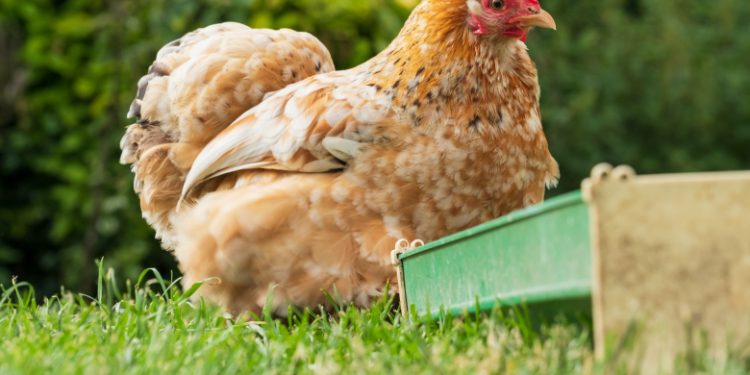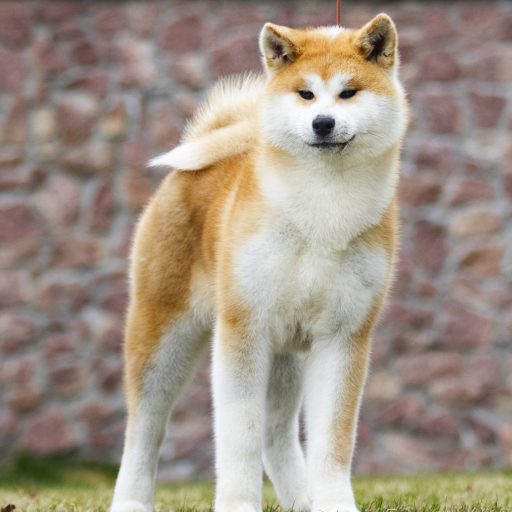The Peking hen, formerly the Peking bantam, is much more than a perfect ornamental hen. This true ball of feathers has a friendly and affectionate personality which makes them a wonderful pet. Honest laying of small, cream-coloured eggs, these hens make good mothers and happily brood, making them ideal for adding to the population of your coop naturally.
Physical peculiarities
Naturally dwarf, the Pekin hen also has the distinction of being short on legs and having a drooping tail, but provided with feathers. This is the case for hens and roosters. These attributes contribute to its very round shape, the width of a Peking hen is practically equal to its height. The plumage is abundant, ideal for cuddles!
There is also a variety of curly Peking hen, the latter has clearly been selected by man to obtain this curly plumage. The gene responsible for curly feathers fades over generations.
Egg template: 35g. Cream shell.
Plumage: black, white, fawn, bluish, cuckoo, spotted, barred, thousand-flower, lavender, partridge, silver partridge and a good twenty others.
Eyes: red or yellow irises depending on the plumage.
Beak: short, arched, yellow or horn in color.
Crest: small, simple, serrated, red.
Chest: quite deep, contributing to its rounded shape.
Mumps: small, red.
Tarsi: small, yellow or darker, feathered, 4 toes.
Behavior and character
Peking hens aren’t just adorable in appearance. They are also the nicest chickens in the coop. They are docile and curious, which creates a great bond between the human and the hen. If you are looking for a hen to cuddle, the Pekin is the one for you. She is also ideal with young children as she is of a calm and accommodating nature. She doesn’t scrape the soil much and isn’t one to peck at your plants.
Obviously, if you have several breeds in your chicken coop, be careful not to mix your Peking hens with overly dominant breeds, prefer other ornamental hens such as Silk hens or Padua hens.
Feed
The Peking hen will be satisfied with a diet for classic laying hens. Special pellets or a fairly high-protein mixture of cereals (wheat, barley, corn, oats) are ideal. Insofar as the Pekin hen is not a great gleaner and will not be able to find insects to supplement its diet, make sure to provide it with a balanced diet, by giving it some treats (cheese crusts, shrimp carcasses, etc.) .
Reproduction
Fertile around 6 months, the Peking hen is not the best of layers, but like other dwarf breeds, she can be very broody and make an excellent mother. Mating can be complicated by the abundance of drooping feathers at the level of the tail, some breeders do not hesitate to trim the feathers a little around the vent.
Health
Peking hens are the dwarf hens with the most feathers, they are even present on the legs and tarsi. This can be a problem, especially in wet weather, as their paws can get very muddy.
They are generally healthy, but still need to be protected against infestations of mites such as red mites and other diseases or hen parasites. Their life expectancy is quite low, about 5 to 6 years.
Place of life
Peking hens are perfect for novice breeders, thanks to their tendency to stay calmly within their set boundaries. Simple, well-placed fences and a cozy chicken coop are all they need.
They can live in a small space, but also love being outside in the garden and won’t harm your lawn and flower beds. If you imagine raising your hens without a pen or have an urban garden, Peking hens are ideal.
These chickens fear the cold and humidity, make sure you have a dry chicken coop, a model with feet for example.
Breed History
The Peking hen has been around for hundreds of years, originating during the reign of the Qing Dynasty in the Chinese Empire.
It found its way to Europe during the Opium Wars, after the Imperial Summer Palace in Beijing was ransacked by British and French forces in the 1860s. Brought back to the old continent as a war chest , taken from the hands of the Xianfeng Emperor. Named Beijing bantam (Beijing dwarf), it was presented to Queen Victoria and earned a place of choice in British poultry high society, quickly becoming the ornamental hen par excellence. Legend has it that the first couple of Pekin hens imported into England were fawn (buff) in color and that they would be the ancestor of all Pekin hens in Europe.












